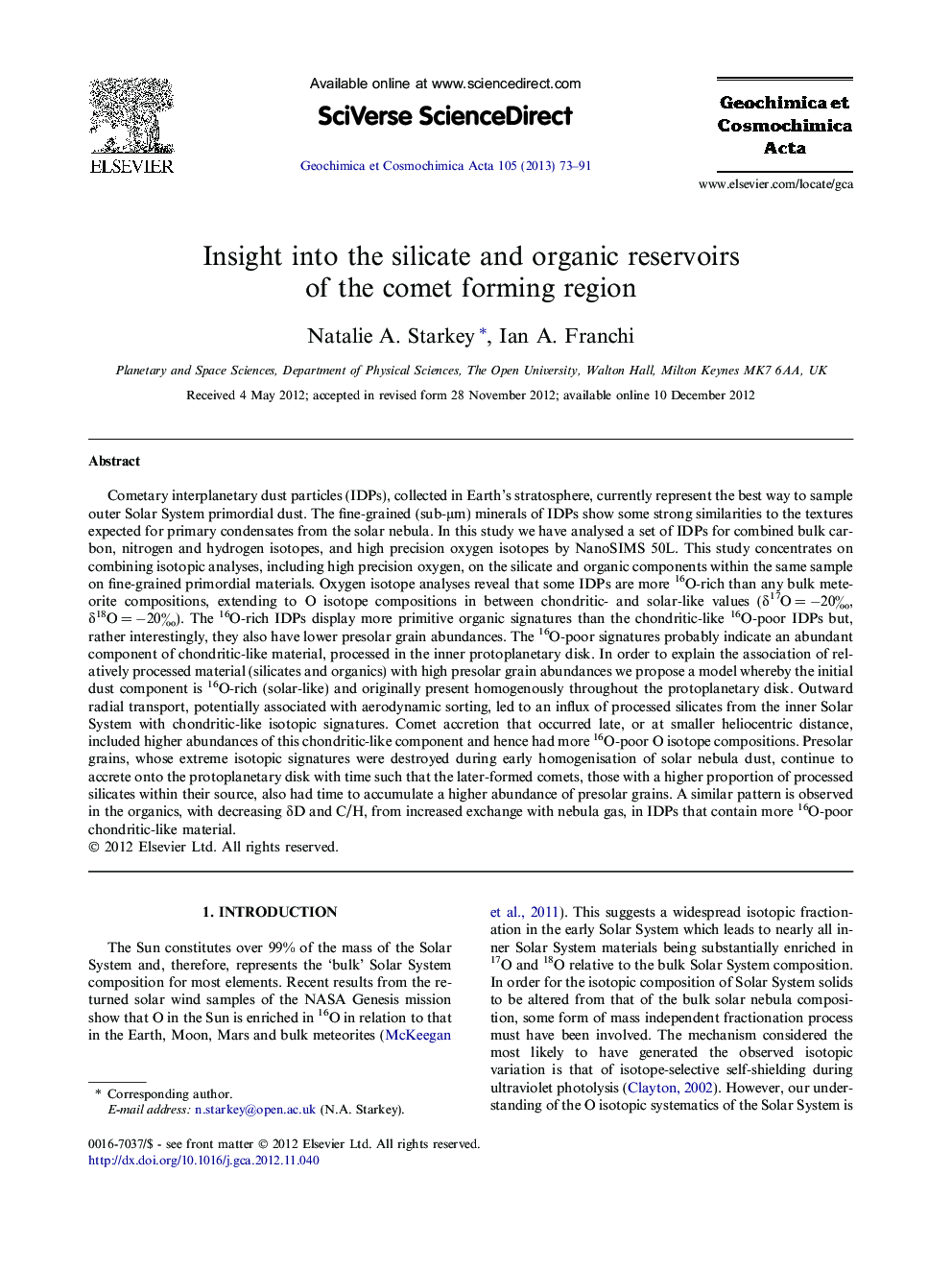| کد مقاله | کد نشریه | سال انتشار | مقاله انگلیسی | نسخه تمام متن |
|---|---|---|---|---|
| 4702543 | 1638052 | 2013 | 19 صفحه PDF | دانلود رایگان |
Cometary interplanetary dust particles (IDPs), collected in Earth’s stratosphere, currently represent the best way to sample outer Solar System primordial dust. The fine-grained (sub-μm) minerals of IDPs show some strong similarities to the textures expected for primary condensates from the solar nebula. In this study we have analysed a set of IDPs for combined bulk carbon, nitrogen and hydrogen isotopes, and high precision oxygen isotopes by NanoSIMS 50L. This study concentrates on combining isotopic analyses, including high precision oxygen, on the silicate and organic components within the same sample on fine-grained primordial materials. Oxygen isotope analyses reveal that some IDPs are more 16O-rich than any bulk meteorite compositions, extending to O isotope compositions in between chondritic- and solar-like values (δ17O = −20‰, δ18O = −20‰). The 16O-rich IDPs display more primitive organic signatures than the chondritic-like 16O-poor IDPs but, rather interestingly, they also have lower presolar grain abundances. The 16O-poor signatures probably indicate an abundant component of chondritic-like material, processed in the inner protoplanetary disk. In order to explain the association of relatively processed material (silicates and organics) with high presolar grain abundances we propose a model whereby the initial dust component is 16O-rich (solar-like) and originally present homogenously throughout the protoplanetary disk. Outward radial transport, potentially associated with aerodynamic sorting, led to an influx of processed silicates from the inner Solar System with chondritic-like isotopic signatures. Comet accretion that occurred late, or at smaller heliocentric distance, included higher abundances of this chondritic-like component and hence had more 16O-poor O isotope compositions. Presolar grains, whose extreme isotopic signatures were destroyed during early homogenisation of solar nebula dust, continue to accrete onto the protoplanetary disk with time such that the later-formed comets, those with a higher proportion of processed silicates within their source, also had time to accumulate a higher abundance of presolar grains. A similar pattern is observed in the organics, with decreasing δD and C/H, from increased exchange with nebula gas, in IDPs that contain more 16O-poor chondritic-like material.
Journal: Geochimica et Cosmochimica Acta - Volume 105, 15 March 2013, Pages 73–91
